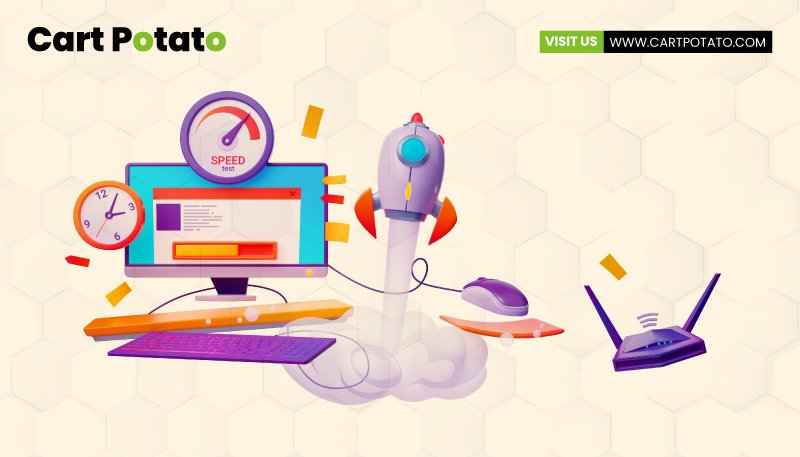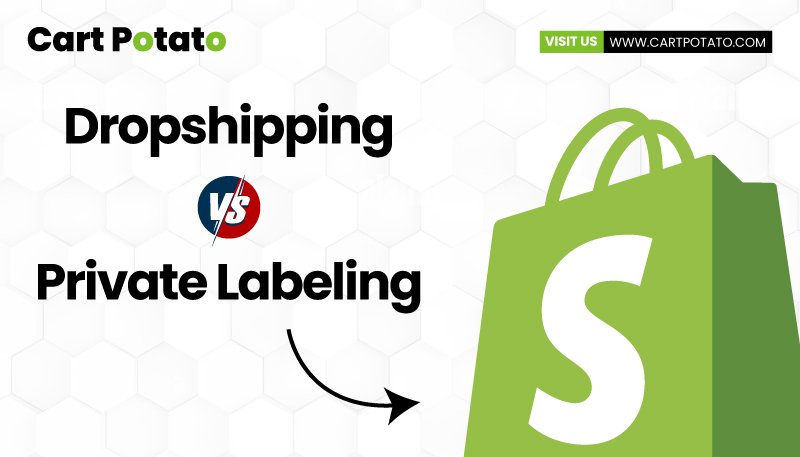
Headless Commerce: A Deep Dive into Future-Proofing Your Online Presence
In the ever-evolving landscape of e-commerce, staying ahead of the curve is crucial for businesses seeking to deliver unique and seamless customer experiences. One architectural approach gaining traction is “headless commerce”.
In this blog, we’ll explore the intricacies of headless commerce, its benefits, and why businesses, especially those on platforms like Shopify and Shopify Plus, are turning to this approach to redefine their online presence.
Let’s delve into the world of headless commerce and discover how it offers unparalleled flexibility, performance, and integration capabilities.
Understanding Headless Commerce
Headless commerce is a revolutionary architecture that decouples the frontend presentation layer from the backend functionality.
This separation empowers businesses to tailor customer experiences across various touchpoints without disrupting backend processes like inventory management and order fulfillment.
For brands, this translates to the creative freedom to craft unique storefront experiences, a level of flexibility typically constrained by monolithic platforms.
Why Brands and Developers Embrace Headless Commerce
1. Full Creative Control:
– Headless commerce offers brands the ability to bring their unique visions to life without constraints. As brands grow digitally, the need for dynamic and personalized experiences increases.
Headless commerce empowers brands to customize every aspect of their online presence, ensuring a tailored, memorable experience for users.
2. Improved Site Performance:
– Site speed is paramount in retaining customer attention. Headless architecture enables faster-loading pages across various devices, meeting the expectations of users who demand swift and responsive interactions.
Studies show that even a one-second improvement in load time can significantly impact bounce rates and, consequently, the bottom line.
3. Integration Flexibility:
– Existing systems coded in different languages can hinder critical integrations. Headless commerce, with its powerful APIs, plays well with all systems.
It allows businesses to seamlessly integrate ERP, PIM, IMS, and other systems, using the programming language of their choice. This adaptability shields businesses from technological shifts and provides the freedom to evolve at their own pace.
Headless Commerce Benefits: More Than Just Flexibility
1. Full Creative Control:
– Headless commerce allows brands to create the exact look and feel envisioned, without limitations. As brands evolve digitally, storefronts require customizations for more dynamic experiences.
Unlike tightly coupled architectures, headless commerce eliminates design sacrifices, offering complete customization using the tools of choice.
2. Improved Site Performance:
– The speed at which a site loads is critical for customer retention. Headless architecture enables faster-loading pages, impacting user experience and, ultimately, the conversion rate.
Brands can optimize the customer journey without risking changes to the underlying back-end architecture.
3. Integration with Preferred Tools and Services:
– Headless commerce accommodates diverse systems, allowing seamless integration of ERP, PIM, IMS, and more. Its use of powerful APIs enables businesses to build a shopping experience using their preferred programming language.
This flexibility protects businesses from technological shifts and empowers them to adapt as quickly as the commerce landscape evolves.
Is Headless Commerce Right for Your Business?
Deciding whether headless commerce is a fit for your business requires careful consideration of your goals, resources, and current infrastructure. If your traditional architecture is yielding positive results and you lack the development resources for a headless transformation, sticking with the status quo might be the sensible choice.
However, if you aspire to deliver a more personalized customer experience, seek flexible development options, and have the resources to support a headless approach, it could be the ideal fit.
Scenarios Where Headless Commerce Shines:
Established Infrastructure Challenges:
If integrating additional tools into your existing technology poses difficulties, headless commerce offers a solution by providing a more flexible and modular approach.
Competitive Pace Concerns:
Businesses feeling hindered by the inability to make simultaneous front- and back-end adjustments may find the agility they need in a headless architecture.
Performance and Speed Prioritization:
For those who prioritize fast and efficient shopping experiences while maintaining control over performance elements, headless commerce provides the necessary flexibility.
Creative Vision Beyond Templates:
Businesses desiring a unique and creative storefront experience that goes beyond the limitations of current themes or templates can unlock their vision with headless commerce.
Mobile App Enhancement Goals:
Lack of a native mobile app or dissatisfaction with the user-friendliness of an existing mobile shopping app can be addressed through the capabilities of headless commerce.
Innovative Storefront Aspirations:
For businesses wanting to build unconventional storefront experiences (e.g., smart mirrors, wearable tech, vending machines), headless commerce opens doors to creative possibilities.
Consideration of Costs:
As you contemplate the shift to headless commerce, it’s crucial to weigh the associated costs and time investments. While an enterprise-level headless project could incur substantial upfront and maintenance costs, channels built on a headless platform may have more accessible pricing, starting as low as $99 a month.
However, the overall cost varies based on the complexity of your build, external agency fees, and ongoing expenses such as subscriptions to a headless CMS platform or hosting fees.
Going Headless with Shopify:
Shopify, a stalwart in supporting businesses transitioning to a headless architecture, offers a suite of tools empowering developers and merchants.
Key components of Shopify’s headless solutions include:
1. Storefront API:
The foundational layer of Shopify’s headless platform, providing access to a comprehensive set of commerce capabilities crucial for buyer-facing experiences.
2. Hydrogen and Oxygen:
Shopify’s official development stack tailored for headless commerce, enabling businesses to build custom experiences efficiently and cost-effectively.
Conclusion
In the dynamic realm of e-commerce, the decision to embrace headless architecture transcends a mere trend; it emerges as a strategic imperative for future-proofing your online presence.
The myriad benefits—ranging from full creative control and enhanced site performance to integration flexibility—underscore headless commerce as a revolutionary force, offering unparalleled adaptability and customer experience enhancement.
For businesses navigating the digital landscape on Shopify and Shopify Plus, the shift towards headless commerce resonates with a commitment to delivering cutting-edge solutions.
It’s not merely a technological shift; it’s a journey towards redefining the online shopping experience. Shopify’s headless solutions stand as a beacon, providing the flexibility and tools necessary for businesses to embark seamlessly on this transformative journey.
As you contemplate the future of your online ventures, consider the unique aspirations and challenges that define your business landscape. The readiness for a more agile and personalized commerce approach becomes the compass guiding your decision to go headless. The possibilities are vast, and the potential for elevating your commerce experience is boundless.
To navigate this transformative landscape and unlock the full potential of headless commerce, connect with Cart Potato, your exclusive Shopify and Shopify Plus agency.
Together, let’s explore the possibilities, reshape your online strategy, and propel your business into the future of commerce. Embrace headless architecture, and witness the evolution of your online presence into a dynamic, customer-centric force.
FAQs
Q1: What is headless commerce, and how does it differ from traditional e-commerce architecture?
A1: Headless commerce is an architectural approach that separates the frontend presentation layer from the backend functionality, providing businesses with the flexibility to customize customer experiences without disrupting backend processes.
Unlike traditional architectures, headless commerce allows for unparalleled creative control and adaptability.
Q2: Why do brands and developers choose headless commerce?
A2: Brands and developers embrace headless commerce for several reasons, including full creative control over the online presence, improved site performance with faster-loading pages, and integration flexibility.
The decoupling of the frontend and backend empowers businesses to create unique and dynamic storefront experiences.
Q3: What are the key benefits of headless commerce for businesses?
A3: The key benefits include full creative control for customized experiences, improved site performance leading to enhanced user experience, and integration flexibility with the ability to seamlessly integrate various systems using powerful APIs.
Q4: Is headless commerce suitable for all businesses, especially those on platforms like Shopify and Shopify Plus?
A4: The decision to go headless depends on the unique goals, resources, and infrastructure of each business.
While headless commerce offers unparalleled flexibility, businesses must consider their specific needs, development resources, and aspirations for a personalized customer experience.
Q5: In what scenarios does headless commerce shine, and when is it not the ideal choice?
A5: Headless commerce is advantageous for businesses facing challenges with integrating additional tools into existing technology, those feeling hindered by the inability to make simultaneous front- and back-end adjustments, and those prioritizing fast and efficient shopping experiences.
It may not be the ideal choice if a traditional architecture is yielding positive results and lacks the resources for a headless transformation.
Q6: What costs are associated with transitioning to headless commerce, and how does Shopify support businesses in this journey?
A6: The costs of transitioning to headless commerce vary based on the complexity of the build. Shopify offers a suite of tools, including the Storefront API, Hydrogen, and Oxygen, empowering businesses with the flexibility and resources needed for a seamless transition.
Costs include upfront development expenses, external agency fees, and ongoing subscriptions or hosting fees.
Q7: How does headless commerce contribute to the future-proofing of an online presence?
A7: Headless commerce future-proofs online presence by offering adaptability to evolving technologies, providing full creative control for dynamic experiences, and ensuring improved site performance.
Q8: How can businesses connect with Cart Potato, the exclusive Shopify and Shopify Plus agency mentioned in the blog?
A8: To explore the possibilities of headless commerce and redefine your online strategy, businesses can connect with Cart Potato by visiting their website or reaching out through the provided contact information.
Cart Potato specializes in guiding businesses through the transformative journey of headless commerce on Shopify and Shopify Plus.
The Latest

The Psychology Behind High-Converting Shopify Product Pages
In a world where shoppers make split-second decisions, your Shopify...

Dropshipping vs Private Labeling: Which Is Better for Shopify in 2025?
Ecommerce is more competitive than ever, and choosing the right...

Shopify Plus: Enhancing Customer Experience in the Beauty & Wellness Industry
The beauty and wellness industry is one of the fastest-growing...


